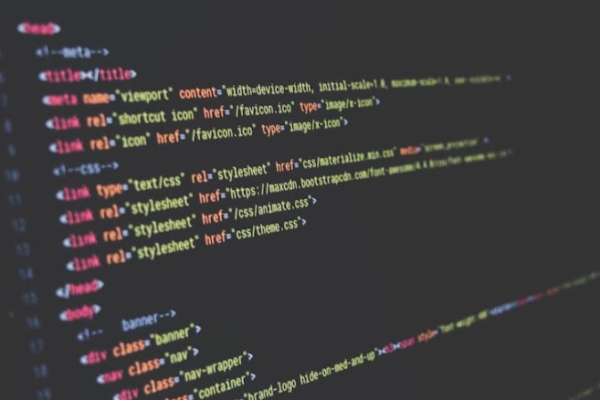In Part 1 of this series, we explored the basics of state management in Lightning Web Components (LWC), focusing on local state management within individual components. If you haven’t read it yet, I recommend starting with Part 1 to grasp the foundational concepts. In this second part, we’ll dive into more advanced territory: shared and global state management. These techniques are essential when you need to manage data across multiple components or even the entire application.
Shared State Management in LWC
Shared state management involves handling state that multiple components need to access or update. In a typical Salesforce application, components often need to share data to ensure a consistent and seamless user experience.
Use Case: ParentChild Communication
One of the most common scenarios where a shared state is necessary is parentchild component communication. Let’s consider a use case where a parent component needs to update a child component’s state based on user interaction.
Example:
Let’s say we have a parent component that allows users to select a product, and a child component that displays details about the selected product.
javascript
// parentComponent.js
import { LightningElement } from 'lwc';
export default class ParentComponent extends LightningElement {
selectedProductId;
handleProductSelect(event) {
this.selectedProductId = event.detail.productId;
}
}
html
<! parentComponent.html >
<template>
<productlist onproductselect={handleProductSelect}></productlist>
<productdetails productid={selectedProductId}></productdetails>
</template>
javascript
// childComponent.js (ProductList)
import { LightningElement, api } from 'lwc';
export default class ProductList extends LightningElement {
products = [ / some product data / ];
selectProduct(event) {
const productId = event.target.dataset.productId;
this.dispatchEvent(new CustomEvent('productselect', {
detail: { productId }
}));
}
}
html
<! productList.html >
<template>
<template for:each={products} for:item="product">
<div key={product.id} dataproductid={product.id} onclick={selectProduct}>
{product.name}
</div>
</template>
</template>
Explanation:
The ParentComponent listens for a productselect event from ProductList and updates its selectedProductId state.
The ProductDetails component uses the productid property passed down from the parent to display details of the selected product.
Debugging Shared State Issues:
- Event Handling: Ensure that custom events are being correctly dispatched and handled. Use console.log to verify the event payload.
- Data Binding: Doublecheck that the data passed from the parent to the child component is properly bound and updated.
- Reactiveness: Remember that reactivity in LWC is based on property mutation. If a component’s property doesn’t seem to be updating, ensure that it’s being mutated directly (e.g., this.property = newValue).
Global State Management in LWC
Global state management becomes necessary when you need to share data across multiple components that may not have a direct parentchild relationship. This can be achieved using the Lightning Message Service (LMS), which allows components to communicate without needing to know about each other.
Use Case: ApplicationWide Notifications
Imagine an application where multiple components need to be notified of a user’s login status. For example, after logging in, the user’s profile information should be available to all components that need it.
Example:
Here’s how you could use the Lightning Message Service to manage global state:
javascript
// loginPublisher.js
import { LightningElement } from 'lwc';
import { createMessageContext, releaseMessageContext, publish } from 'lightning/messageService';
import USER_LOGIN_CHANNEL from '@salesforce/messageChannel/UserLoginChannel__c';
export default class LoginPublisher extends LightningElement {
context = createMessageContext();
handleLogin() {
const message = {
userId: '0017F00000PqWPE',
userName: 'John Doe'
};
publish(this.context, USER_LOGIN_CHANNEL, message);
}
disconnectedCallback() {
releaseMessageContext(this.context);
}
}
javascript
// profileComponent.js
import { LightningElement, wire } from 'lwc';
import { subscribe, MessageContext } from 'lightning/messageService';
import USER_LOGIN_CHANNEL from '@salesforce/messageChannel/UserLoginChannel__c';
export default class ProfileComponent extends LightningElement {
userId;
userName;
@wire(MessageContext)
messageContext;
connectedCallback() {
this.subscribeToMessageChannel();
}
subscribeToMessageChannel() {
this.subscription = subscribe(
this.messageContext,
USER_LOGIN_CHANNEL,
(message) => this.handleMessage(message)
);
}
handleMessage(message) {
this.userId = message.userId;
this.userName = message.userName;
}
}
Explanation:
The LoginPublisher component publishes a message on the UserLoginChannel when the user logs in.
The ProfileComponent subscribes to this channel and updates its state based on the message received.
Debugging Global State Issues:
- Subscription Errors: Ensure that the subscription is correctly set up in the connectedCallback method and that the message channel is properly configured in Salesforce.
- Context Management: Be mindful of managing the message context, especially when components are removed from the DOM (disconnectedCallback).
- Message Payload: Validate that the message payload structure matches between the publisher and subscriber components.
Best Practices for State Management in LWC
- Keep State as Local as Possible:
Manage state locally within components whenever feasible. Only elevate state to shared or global levels when multiple components genuinely need access.
- Use Lightning Message Service for Decoupled Components:
LMS is ideal for scenarios where components need to communicate without a direct relationship, promoting loose coupling and modularity.
- Handle State Reactively:
Leverage LWC’s reactivity model by mutating properties directly. Use @api, @track, and @wire appropriately to ensure components react to state changes.
- Debug Early and Often:
Use a combination of console.log, the Salesforce LWC Debug Mode, and browser developer tools to catch issues early. State management bugs can be tricky to debug, so frequent checks are vital.
Conclusion
State management is, without a doubt, a cornerstone of building scalable and maintainable applications in LWC. By mastering local, shared, and global state management, you can ensure that your components communicate effectively and your applications run smoothly. Moreover, with the techniques and best practices outlined in this series, you are now well-equipped to handle even the most complex state management challenges in LWC. Consequently, you can build more robust and efficient Salesforce applications with greater ease.
For a deeper understanding of local state management, be sure to revisit Part 1, where we laid the groundwork for everything discussed here.
Happy coding, and may your state management be ever so smooth!
Further Reading and References
Handling State in LWC: Best Practices
Navigating JavaScript with Short-Circuiting

